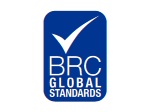## Eco-Friendly Solutions: The Rise of Green Packaging
As the harmful impact of plastic waste on our environment becomes increasingly apparent, a significant shift is emerging towards eco-friendly solutions in packaging. Green packaging, especially seaweed-based alternatives, is gaining momentum as companies and consumers alike seek sustainable ways to reduce environmental degradation. This detailed article delves deep into the rise of green packaging, examining its benefits, innovations, and the future prospects of this transformative trend.
### The Problem with Traditional Packaging
Traditional packaging materials, predominantly plastic, have been convenient and cost-effective for manufacturers. Unfortunately, their long-term environmental consequences are devastating. Plastics are non-biodegradable, often ending up in landfills and oceans, where they degrade into microplastics, contaminating food chains and disrupting ecosystems. The production of plastic packaging also releases significant carbon emissions, contributing to climate change.
### Enter Green Packaging
Green packaging, or sustainable packaging, refers to the use of materials and manufacturing methods that are ecologically friendly, minimizing their environmental footprint. This includes the use of biodegradable, recyclable, and compostable materials, along with practices that reduce energy consumption and waste during production.
### Seaweed Packaging: An Innovative Solution
One of the most promising innovations in green packaging is the use of seaweed. Seaweed-based packaging represents a novel and sustainable alternative to conventional plastic, offering numerous advantages including:
#### 1. **Biodegradability**
Seaweed packaging is entirely biodegradable. Unlike plastic that can take hundreds of years to decompose, seaweed packaging decomposes naturally within a matter of weeks, leaving no harmful residues behind.
#### 2. **Renewable Resource**
Seaweed is an abundant and renewable resource. It grows rapidly without the need for fertilizers, pesticides, or freshwater, making it a highly sustainable raw material.
#### 3. **Carbon Neutrality**
Seaweed absorbs carbon dioxide during its growth, making seaweed-based packaging a carbon-neutral or even carbon-negative solution. This contributes to reducing overall greenhouse gas emissions.
#### 4. **Versatility and Durability**
Seaweed can be processed into materials with various textures and strengths, capable of replacing different types of plastic packaging used in food, cosmetics, and other industries.
### The Development and Adoption of Seaweed Packaging
The journey from seaweed to packaging involves several steps, from harvesting and processing the seaweed into usable materials to developing packaging solutions tailored to specific needs. Start-ups and larger companies are investing in research and development to optimize these processes, making seaweed packaging commercially viable and scalable.
For example, Evoware, a pioneering company based in Indonesia, has developed seaweed-based packaging solutions for food wraps, sachets, and more. These not only reduce plastic waste but also support local seaweed farmers, creating a positive socio-economic impact.
### Benefits Beyond Environmental Impact
The adoption of seaweed packaging extends benefits beyond the environmental realm:
#### 1. **Economic Opportunities**
The cultivation and harvesting of seaweed can provide livelihoods for coastal communities, particularly in developing countries. This promotes economic development and diversifies income sources for these communities.
#### 2. **Health and Safety**
Seaweed-based packaging is free from synthetic chemicals and toxins typically found in plastics, ensuring that products remain safe and uncontaminated.
#### 3. **Consumer Appeal**
Today’s consumers are increasingly eco-conscious, demanding sustainable options. Brands that adopt green packaging solutions can enhance their reputation and appeal to this growing market segment.
### Challenges and Future Prospects
Despite its many advantages, the widespread adoption of seaweed packaging faces challenges. High initial costs, scalability issues, and limited consumer awareness are significant hurdles that need to be overcome. Nonetheless, ongoing research, technological advancements, and stronger policy support can pave the way for broader adoption.
### Conclusion
The rise of green packaging, particularly seaweed-based solutions, marks a pivotal shift towards sustainability in the packaging industry. While challenges remain, the environmental, economic, and health benefits of green packaging underscore its potential to revolutionize the way we package and consume products. As companies and consumers increasingly prioritize eco-friendly choices, the momentum behind green packaging is set to continue its upward trajectory, offering hope for a cleaner, greener future.
### Call to Action
As individuals, we can contribute to this movement by supporting brands that use sustainable packaging, reducing our own plastic consumption, and advocating for greater environmental responsibility within our communities. Together, we can accelerate the transition towards a more sustainable world.
—
By embracing and investing in eco-friendly packaging solutions like seaweed, we are not only addressing an urgent environmental challenge but also fostering a culture of innovation and responsibility that will benefit generations to come.



